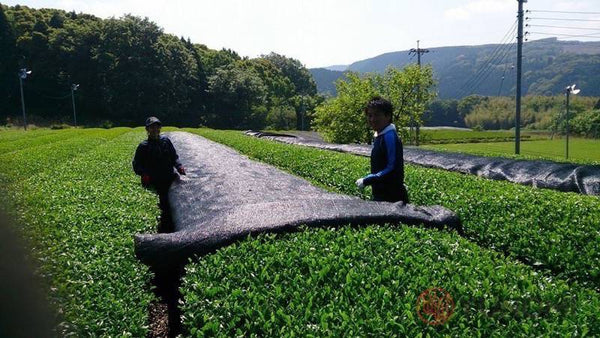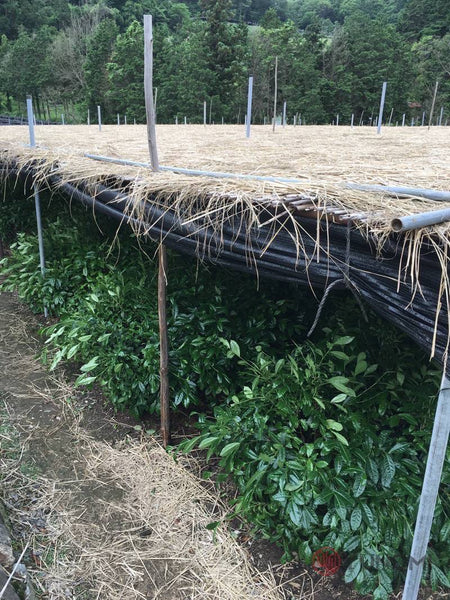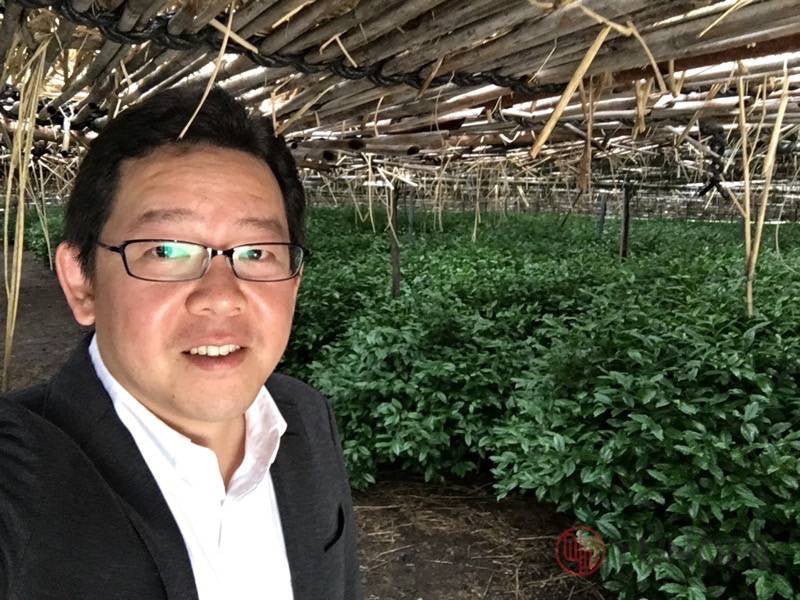Factors that determine the quality and type of Japanese tea > Cultivation > Shading
Shading, the cutting off of sunlight from new growing tea leaves, forces the plant to do two things in general increase umami / decrease astringency.
- The amount of L-theanine amino acid, the chemical component responsible for a green tea’s umami flavor, is retained. Exposure to sunlight decreases this component and increases catechins, a group of antioxidants, as the leaf grows causing the leaf to become more astringent and bitter. In general, tea leaves that have more umami is considered higher grade.
- Leaves create more chlorophyll to convert what sunlight does reach them into energy. This makes the leaf greener in color.
- Types:
- Sencha is called Kabusecha when shaded (literally “shaded tea”), in general around 2 weeks.
- When shaded for around 20 days or more it is called Gyokuro.
- Sencha may continue to be called sencha even if the leaves are shaded, though in recent years the term “kabusecha” gives a tea a higher value.
- Shaded leaves may also be blended into sencha to increase the umami strength of the final flavor profile. .
- There are two basic types of shading, direct covering and canopy covering.
- Farmers generally use a black plastic material for this type of shading, although there are other material (white and yellow in color) that serve other purposes such as increasing the temperature around the plants. While easy to apply, the shading material can flap against the leaves in the wind and potentially damage them. In addition, the amount of sunlight cannot be adjusted with plastic covering.
- Traditional shading methods use different types of grass or straw material. When this is done, we call it “Heritage Grade”. Straw or grass covering is almost never done with direct shading. When used in canopy shading for the highest quality gyokuro and tencha/matcha, farmers can add material a little at a time increasing the percentage of sunlight that is cut off over time.
Direct shading with plastic at the Tomizawa Tea Farm

Plastic canopy shading at the Nishide Tea Factory's grower's tea field

Traditional canopy shading at tea fields used by Yunomi's producer for the Yunomi Factory Direct organic matcha. (Yunomi tea merchant Ian taking a selfie...)






3 comments
Shading does not seem to reduce catechin contents. There are conflicting papers regarding the amount of polyphenols in shaded vs. unshaded green tea. Some pointed out that EGCG was higher in the shaded ones. I suspect that unshaded green tea keeps on binding catechins to form larger “true-tannins” with the molecular weight ranging 1000~5000 Da. It seems a truly difficult matter trying to decide whether shading tea makes it healthier for humans.
Plastic bags are standard if they are sealed. After you open a sealed bag, even if there is a ziplock seal, that is meant to be temporary assuming you will consume your tea within a reasonable amount of time. A heat seal keeps it fresh the longest.
The bag should be opaque to avoid sunlight but if stored in the direct sunlight, even if opaque, the heat from the sunlight will change the tea. Always best to store the bag somewhere to avoid the sunlight.
Of course every tea reacts differently with matcha and green teas being most delicate to air, humidity and sunlight exposure.
This was so informative. Thank you! I work in a tea shop with loose teas and we have many kinds Matcha and Sencha.
They are put in plastic bags and also stored in plastic bags. I have read that this is nor good to do and it’s in sunlight. Will that damage the tea?